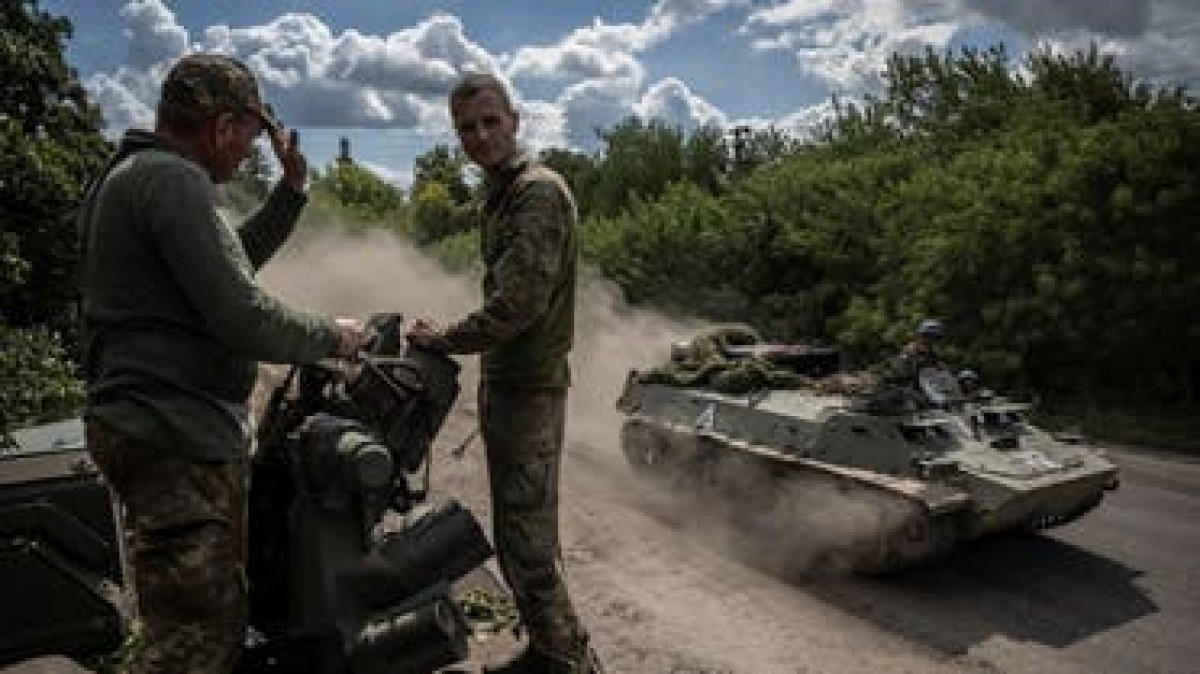Kiev forces destroy a second strategic bridge in Kursk... and Pokrovsk is within range of Russia


Kiev announced, on Sunday, that it had destroyed a second strategic bridge in the Russian Kursk region, where its forces have been launching an unprecedented attack for 12 days, while the Russian army confirms its continued advance in the Ukrainian east, towards the city of Pokrovsk.
On August 6, the Ukrainian army attacked the Kursk border region, where, according to Kiev, it took control of 82 towns and 1,150 square kilometers of territory in an attack that came as a surprise to Moscow, thus transferring for the first time, in a large-scale and prolonged manner, the confrontations to Russian territory.
In recent days, the Ukrainian army announced the strengthening of its positions in the Russian region, making gradual progress, “exactly what we planned,” in the words of Ukrainian President Volodymyr Zelensky.
For its part, Moscow reiterated on Sunday its emphasis on “repelling” Ukrainian attacks thanks to reinforcements sent to the region and inflicting heavy losses on the enemy.
But many questions arise about Kiev's intentions in the short and medium term.
The Ukrainian authorities stress that the aim of the attack is not to “occupy” part of Russian territory, but rather to put pressure on the Russian army and push Moscow to engage in “fair” negotiations, at a time when Russia occupies about 20 percent of Ukraine
On Sunday, Ukrainian Air Force Commander Mykola Oleshchuk welcomed the destruction of a second bridge of strategic importance to the Russian army, two days after a similar announcement.
He said in a post on Telegram, “The Air Force continues to deprive the enemy of its logistical capabilities thanks to precise air strikes.”
Olishchuk did not clarify when the strike was carried out, which apparently hit a bridge on the Sim River, about 15 km north of the Ukrainian border.
Russian blogs that follow the battles published photos dated Saturday that appear to show a bridge that was struck by a strike, considering that this destruction will restrict the ability of Russian forces to maneuver in the region.
The battles displaced tens of thousands of people from areas on both sides of the border, and resulted in at least ten deaths, according to Russian authorities.
Fuel depot burning
In parallel with its attack, Ukraine seeks to curb the supply of Russian forces deep into Russian territory, in response to daily attacks carried out by Moscow on its territory since February 2022.
On Saturday night and Sunday, Ukrainian marches carried out an attack on an oil storage facility in the Rostov region in southern Russia, which led to the ignition of fuel and the outbreak of a huge fire, according to the region’s governor, Vasily Golubev.
Golubev’s post on Telegram said, “In the southeast of the Rostov region, air defenses repelled a drone attack. As a result of shrapnel falling on the area of industrial storage facilities in (the city of) Proletarsk, a fire broke out.”
Videos posted on social media showed thick black smoke and flames rising from the fire site.
In confirming the strike, Ukrainian forces justified their attack by saying that this facility “stored oil and petroleum derivatives” essential for meeting the “needs” of the Russian army.
Pokrovsk vs. Russia
While the Ukrainian attack in Kursk attracts great attention, the bulk of the battles continue in the Ukrainian Donbass region, where the Russian army has the advantage against smaller Ukrainian forces.
On Sunday, Russia announced control of the village of Sviridonivka, about 15 km from the city of Pokrovsk, the important axis in eastern Ukraine, which it has been seeking for several months to reach.
The city of Pokrovsk, which had a population of about 61,000 people before the conflict, is located on a main axis that leads to the two Ukrainian strongholds of Chasev Yar and Kostyantnevka, which Moscow seeks to control.
This progress indicates continued pressure on the Eastern Front, despite the unprecedented advance of Ukrainian forces on the territory of Russia.